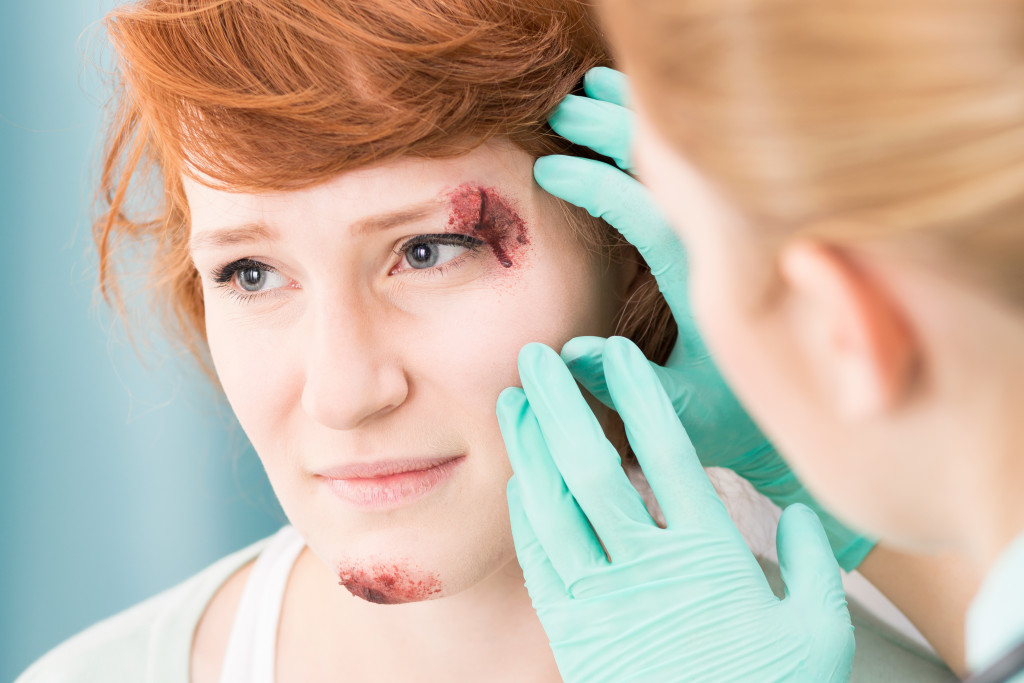- Traditional wound management involves using dressings and bandages to protect and promote healing.
- Medical adhesive products are increasingly becoming preferred for wound closure and management.
- Advanced dressings have taken center stage, promoting faster wound healing while keeping the wound moist and bacteria-free.
- Negative Pressure Wound Therapy (NPWT) is a significant development in wound management.
- Regenerative therapies such as Platelet Rich Plasma (PRP) therapy involve using a patient’s cells to promote tissue regeneration.
Cuts, abrasions, punctures, and lacerations are some common injuries people get daily. While most of these wounds are minor, some require immediate medical attention.
With advancements in medical technology, wound management has become more efficient than ever. Hospitals and healthcare facilities are now equipped with state-of-the-art medical equipment to provide patients with the best care. This blog will explore the latest medical trends in wound management, revolutionizing how healthcare professionals treat wounds.
An Overview of Traditional Wound Management
Healthcare professionals have traditionally used wound dressings and medical bandages to treat a variety of wounds. These products protect the damage, reduce the risk of infection, and provide an environment that fosters healing.
Over time, medical professionals have developed a wide range of wound-management products to meet the needs of different patients. For instance, medical adhesive dressings are designed to provide cushioning and protection for wounds that require minimal pressure. At the same time, hydrocolloid dressings are used to create a moist healing environment around susceptible areas.
New Wound Management Technologies
In recent years, medical professionals have begun using various new wound management products to provide better patient care. Here are some of the most popular technologies being used today:
Medical-grade Adhesive Products

Medical-grade adhesive products are increasingly becoming preferred for wound closure and management. Unlike traditional sutures and staples, medical-grade adhesives are minimally invasive and cause minimal trauma to the wound.
Medical-grade adhesives also promote faster healing and reduce the risk of infection. They can be used for various wounds, including surgical incisions, lacerations, abrasions, and puncture wounds.
Advanced Dressings
Gone are the days when gauze and bandages were the go-to dressings for wound care. Advanced dressings have taken center stage, promoting faster wound healing while keeping the wound moist and bacteria-free. Advanced dressings have a higher absorption capacity, allowing them to retain moisture while keeping harmful organisms at bay.
One such innovative dressing is the hydrocolloid, ideal for non-infected wounds such as pressure sores and diabetic ulcers. Silicone dressings, on the other hand, are designed to protect the damage while allowing it to breathe.
Negative Pressure Wound Therapy
Negative Pressure Wound Therapy (NPWT) is another significant development in wound management. It involves placing a vacuum dressing over the wound to remove excess fluid and improve blood circulation. NPWT is ideal for deep wounds, burns, and pressure ulcers that require constant monitoring and management.
Regenerative Therapy
Regenerative therapy is a new and emerging trend in wound management. The process involves using a patient’s cells to promote tissue regeneration and wound healing. One such application of regenerative therapy is platelet-rich plasma (PRP) therapy.
It involves drawing a patient’s blood, which is then processed to yield PRP. The PRP is then injected into the wound, promoting faster healing and reducing the risk of infection. This therapy is ideal for chronic wounds that have failed to heal using conventional treatments.
Hyperbaric Oxygen Therapy
Hyperbaric Oxygen Therapy (HBOT) is another advanced medical trend in wound management. The therapy involves placing a patient in a hyperbaric chamber and administering high-pressure oxygen to promote wound healing. HBOT introduces oxygen to blood plasma, triggering a chain reaction that promotes blood vessel growth and wound healing. It is ideal for wounds that have failed to heal using other medical treatments.
What the Future Holds

Due to the rapid advancements in medical technology, healthcare professionals can now provide more efficient and effective wound care. The latest wound management trends have revolutionized how doctors treat wounds, providing patients with the best care.
There is no doubt that these technologies will continue to develop and evolve over the years. Patients can now look forward to even more advanced and innovative treatments for their wounds in the future.
Final Thoughts
By introducing new and advanced medical trends, wound management has come a long way. From advanced dressings to hyperbaric oxygen therapy, healthcare professionals now have a range of options to choose from when it comes to treating wounds.
These medical trends promote faster healing while reducing the risk of infection and other complications. As technology evolves, we expect to see even more groundbreaking innovations in wound management that will change how we treat wounds.
